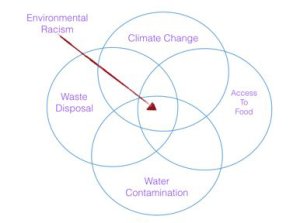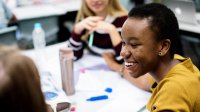Using PBL to Encourage Interdisciplinary Work
Project-based learning units that include different disciplines allow students to apply what they learn to new situations, leading to deeper learning.
Your content has been saved!
Go to My Saved Content.A class of 28 middle school students is looking at the teacher, preparing for another day of her laying out clear outcomes, providing specific input, direct modeling, and guided practice. They expect the teacher to give them time to work independently, and then they will await her feedback. The day, however, unfolds a bit differently, because the students are about to embark on a project-based learning unit.
The teacher tells the students that they will all be looking at a number of messy problems and trying to figure out how they all connect. Students are divided into four groups—or breakout rooms for online classes—and given one of four topics: food deserts, water pollution, climate change, and waste management. As a means to understand the problem they have been given, students review newspaper articles, editorials, interviews, and videos.
After 15 minutes, the students come back together and are tasked with forming new groups that include one student from each of the original topic groups. They are told to share their topics and attempt to find the similarities and differences between them. Students share their messy problem and begin to realize that environmental problems and racism are core themes that connect the various topics that the original groups explored. What appeared to be disparate problems at first glance now look to be related.
The teacher brings all the students back together and asks them to answer the following questions:
- What appear to be the similarities and differences between the various contexts?
- What questions emerge for you? What do you want to answer?
- What are the recurring problems in these situations?
- What analogies can you design outside of the environmental science contexts?
Through the discussion, the students begin to realize that concepts of power, discrimination, and fragmentation are recurring and spread across various contexts and subject areas. Students generate questions related to the responsibilities of protecting people and space, the insidious and omnipresent nature of institutional racism, and the fits and starts of the civil rights and environmental movements.
They were handed a messy set of problems and are walking away seeing interconnections between all of them. They now have an eagerness to develop the knowledge and skills to go after solving the problems they just encountered and answer the questions they generated.
Rigor Defined
I define rigor as the equal intensity and integration of surface, deep, and transfer learning.
- Surface learning allows students to define and label ideas and use skills, but they can’t connect the ideas and skills together.
- Deep learning allows students to relate ideas and connect skills, but they can’t apply those ideas and skills to different situations.
- Transfer learning allows students to apply ideas and skills to different situations.
A teacher who values rigor appreciates all three levels of complexity and designs and implements instruction that ensures students learn at all levels. He or she enables students to apply their depth of learning across different situations and finds ways to use broad cross-discipline comparisons to then home in on one subject and enrich students’ depth of knowledge.
To establish rigorous learning for students, depth of knowledge must be established in tandem with the incorporation of knowledge and skills that enable students to see across situations and perspectives, tackle changing problems, and engage with others. Balance between depth (surface and deep knowledge and skills) and breadth (transfer knowledge and skills) is the key to rigor.
Rigor in action is a student’s ability to be cognitively flexible and shift between depth and breadth. Our role right now as educators is to lean in on the tools for transfer to ensure that students connect the real world (transfer knowledge and skills) to the academic canon (surface and deep knowledge and skills).
Teaching for Transfer Application Strategies
Research has illustrated that when students see similarities and differences across problems and recognize patterns across problems, they will grow more than one year in a year’s time. Moreover, Robert Marzano, a top researcher in education, argues for the use of generating and testing hypotheses as a core strategy for not only understanding various situations but doing something with that knowledge. Therefore, we will add generating and testing hypotheses as part of our transfer toolbox. The following strategies are highly recommended for teaching for transfer.
Compare contexts: In the classroom, we often have students use Venn diagrams to compare ideas within our discipline (plants versus animals, number bonds versus tape diagrams, figurative versus literal language, etc.). Such comparisons are helpful in deepening a student’s understanding of a subject area.
In transfer learning, comparisons are of equal importance to the work that students do at the deep level of learning. The key difference is that at transfer, students are comparing different situations across discipline(s) as opposed to ideas within a discipline. For example, see the Venn diagram that students were putting together for the environmental racism project mentioned in the introduction.

One strategy to begin students in this process is to start students with exploring multiple contexts and asking them to compare the contexts.
Create analogous problems: When students are exploring a major theme in their literature class, ask them to create an analogy to an issue they read about in the newspaper, the events that took place at lunch today, a movie or podcast they engaged with recently, or one from their imagination. Giving students these prompts causes them to step out of the specific book they are reading and begin searching for new situations where the ideas taught are found all around them.
Generate and test hypotheses: When students encounter messy problems, ask them to generate multiple hypotheses to solve the problem, and ways to test them.
Learning within and across academic disciplines, which incorporates real-world issues, develops a student’s ability to innovate. Having that ability will prepare students well for the future, no matter what career path they choose to pursue.
